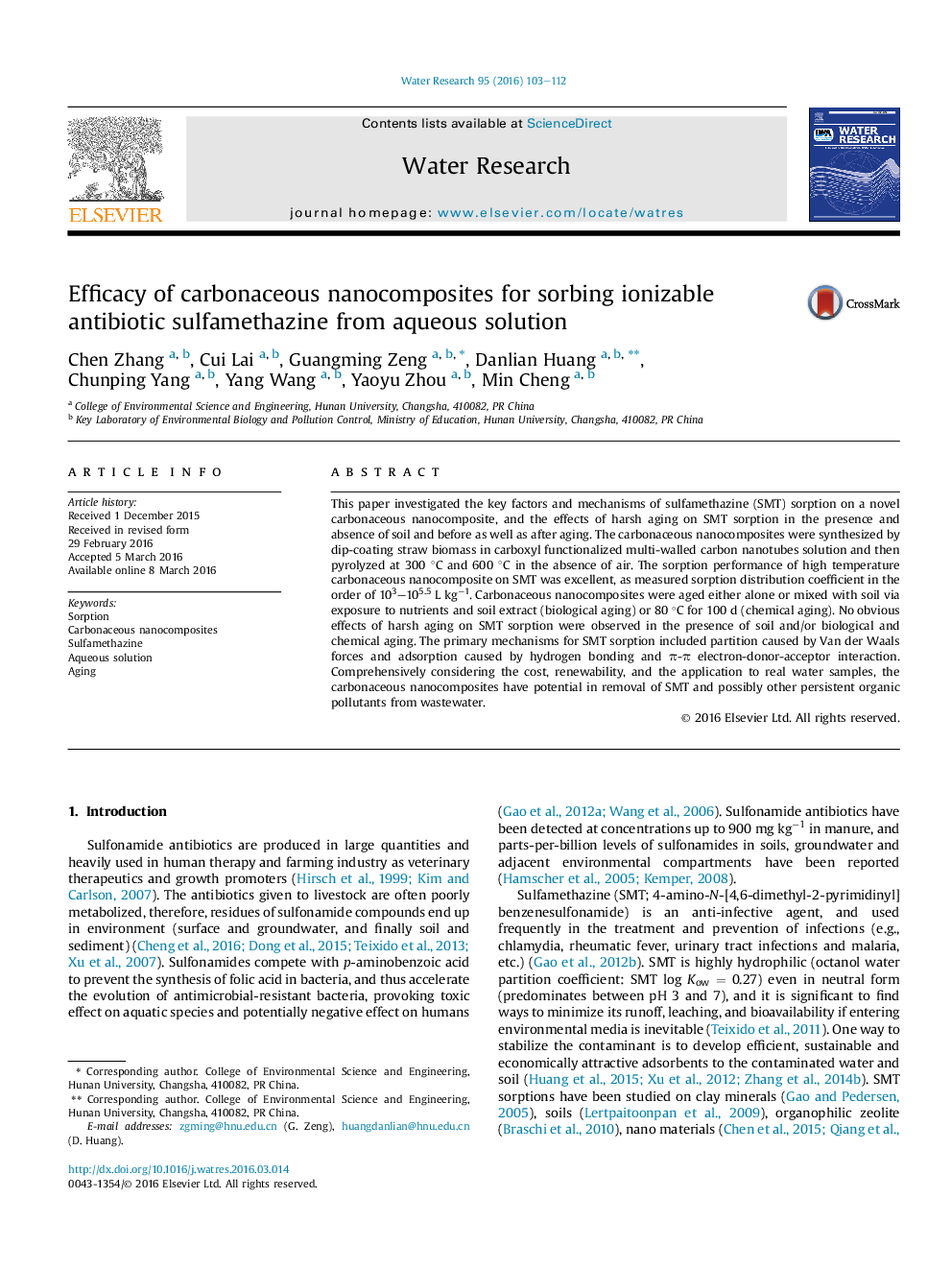| Article ID | Journal | Published Year | Pages | File Type |
|---|---|---|---|---|
| 6365014 | Water Research | 2016 | 10 Pages |
â¢Carbonaceous nanocomposites were synthesized by dip-coating and slow pyrolysis.â¢Sorption distribution coefficient of sulfamethazine was 103-105.5 L kgâ1.â¢No obvious effects of harsh aging on sulfamethazine sorption were observed.â¢The application to real sulfamethazine wastewater is highly feasible.
This paper investigated the key factors and mechanisms of sulfamethazine (SMT) sorption on a novel carbonaceous nanocomposite, and the effects of harsh aging on SMT sorption in the presence and absence of soil and before as well as after aging. The carbonaceous nanocomposites were synthesized by dip-coating straw biomass in carboxyl functionalized multi-walled carbon nanotubes solution and then pyrolyzed at 300 °C and 600 °C in the absence of air. The sorption performance of high temperature carbonaceous nanocomposite on SMT was excellent, as measured sorption distribution coefficient in the order of 103-105.5 L kgâ1. Carbonaceous nanocomposites were aged either alone or mixed with soil via exposure to nutrients and soil extract (biological aging) or 80 °C for 100 d (chemical aging). No obvious effects of harsh aging on SMT sorption were observed in the presence of soil and/or biological and chemical aging. The primary mechanisms for SMT sorption included partition caused by Van der Waals forces and adsorption caused by hydrogen bonding and Ï-Ï electron-donor-acceptor interaction. Comprehensively considering the cost, renewability, and the application to real water samples, the carbonaceous nanocomposites have potential in removal of SMT and possibly other persistent organic pollutants from wastewater.
Graphical abstractDownload high-res image (279KB)Download full-size image
